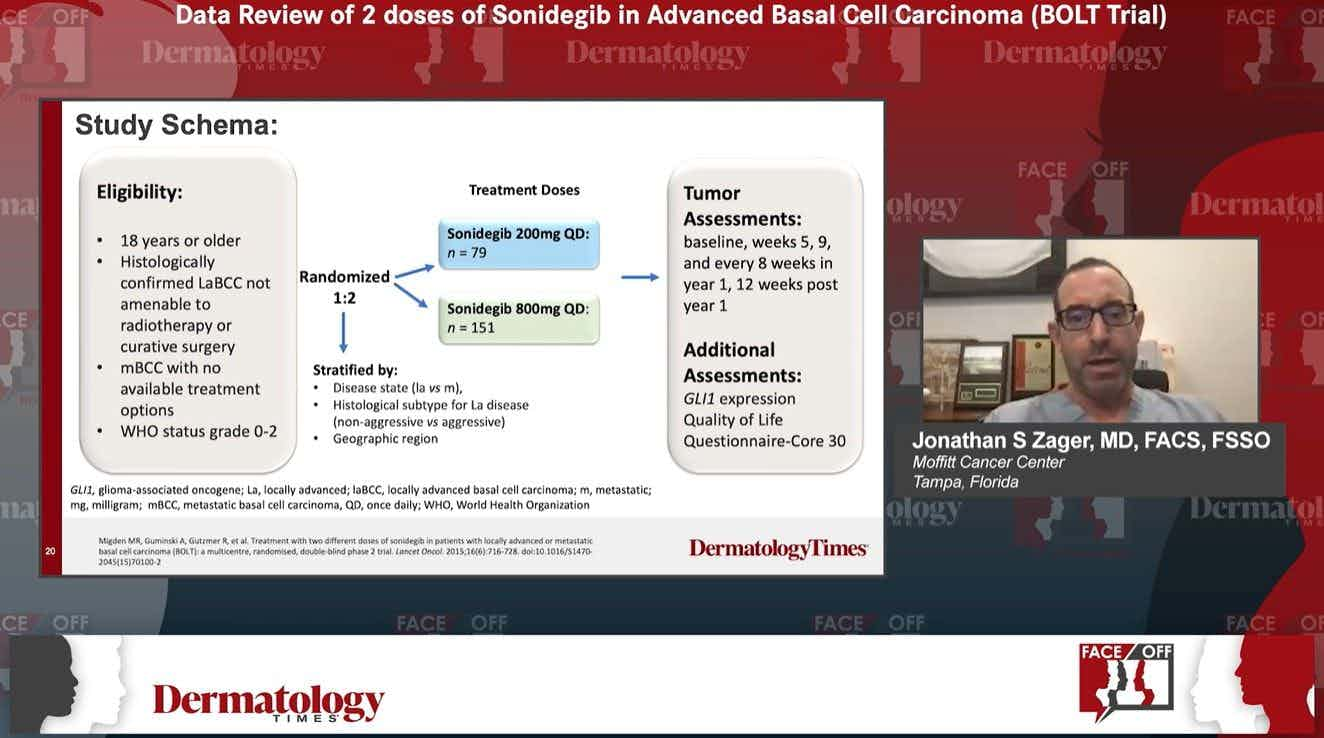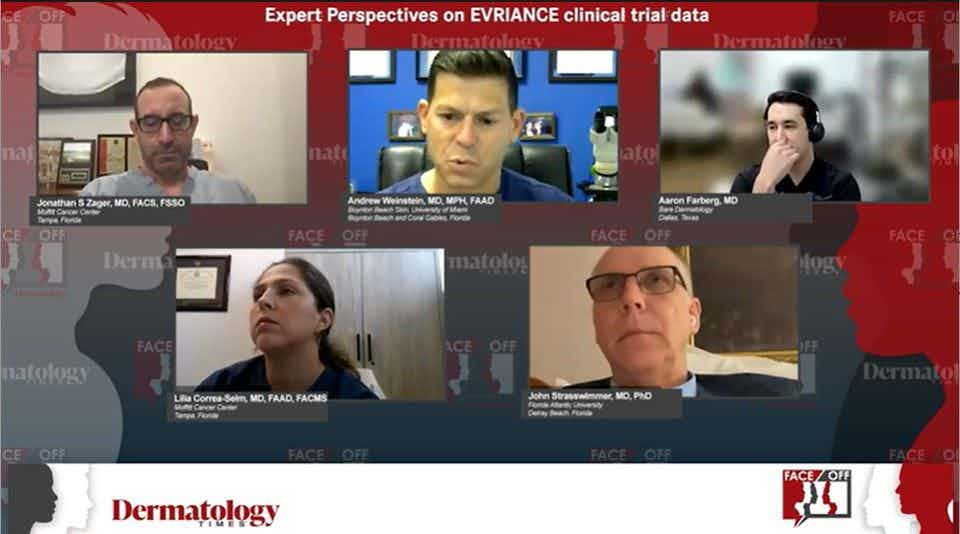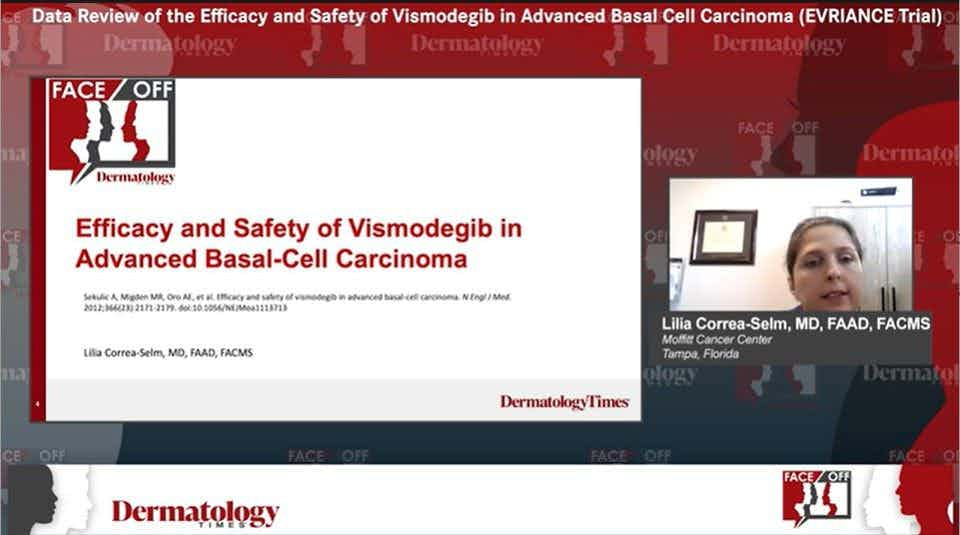- Acne
- Actinic Keratosis
- Aesthetics
- Alopecia
- Atopic Dermatitis
- Buy-and-Bill
- COVID-19
- Case-Based Roundtable
- Chronic Hand Eczema
- Chronic Spontaneous Urticaria
- Drug Watch
- Eczema
- General Dermatology
- Hidradenitis Suppurativa
- Melasma
- NP and PA
- Pediatric Dermatology
- Pigmentary Disorders
- Practice Management
- Precision Medicine and Biologics
- Prurigo Nodularis
- Psoriasis
- Psoriatic Arthritis
- Rare Disease
- Rosacea
- Skin Cancer
- Vitiligo
- Wound Care
Article
Sunscreen Protection for Children
Author(s):
Protection from the harsh rays of the sun is crucial for everyone—including children. Now that summer has arrived, a refresher course for your patients and their families on sun protection, which can go a long way in preventing skin damage and disorders due to the sun.
As pediatric health care providers, we are fully aware of the havoc that the sun can wreak, especially on unproteced skin. Protective measures such as sunscreen use help reduce the effects of the sun’s UV rays, especially on the delicate skin of children. Specific effects of UV radiation (UVR) include erythema, edema, darkening pigment, suppression of the immune system, and premature aging of the skin. UVR can damage DNA and interfere with normal cell function, leading to skin cancers.1,2
Understanding UV light
The sun’s UV light is divided into UV-A, UV-B and UV-C. UV-A (320-400 nm) is not absorbed by the ozone layer. UV-A is believed to penetrate deeper into the skin, damage connective tissue, and lead to skin cancers, among other kinds of skin damage. UV-B (290-320 nm) is mostly absorbed by the ozone layer, but some does get through. It does not penetrate the skin as deeply, but the risk of triggering skin cancer is well established. UV-B is also responsible for burns. UV-C (100-290 nm) is absorbed by the ozone layer not thought to pose a skin cancer risk. Multiple factors affect how much UVR gets to the earth surface; unfortunately, ozone-depleting chemicals used in industry and consumer products have thinned the ozone layer.3-5
Although UV-B can help the body synthesize vitamin D, most pediatric health care providers recommend using sun protection and taking a supplement of 400 IU of vitamin D3, if it is not consumed in the diet. The effects of UVR on the eyes have been associated with a number of disorders—some affect only adults, others also affect children—including macular degeneration, pterygium (a noncancerous growth that starts on the conjunctiva and can extend to the sclera and cornea), photokeratitis (temporary sunburn-like change that affects the cornea), keratopathy (disease that affects the cornea), and cortical cataracts.6
The sun is the most intense on your skin between 10 am and 2 pm. However, for a patient’s eyes, the time of maximum UV exposure is from 8 to 10 am and from 2 to 4 pm, when the sun is parallel to the eyes. UV-B is absorbed mainly by the cornea, whereas UV-A is absorbed by the cornea, aqueous, and lens.6
According to the American Academy of Ophthalmology, sunglasses should block 99% to 100% of both types of rays. A “UV 400 rating signifies the highest level of protection, blocking wavelengths up to 400 nm. Polarized sunglasses block glare but do not provide adequate UV protection. Ideally, sunglasses offer both UV 400 and polarization. Wearing sunglasses with side panels, which address oblique rays, is also recommended.7 Eye damage is from UVR is cumulative, not showing up until you are in your forties. Children are more at risk because they have larger pupils and more transparent ocular media.8
Clinical study findings show that people get most of their sun exposure before 18 years of age. As with the eyes, sun damage to skin builds up, and consequences may not be seen for decades. Getting blistering sunburns and working outside in the sun for at least 3 years before age 18 years increases the chances of developing skin cancer later.
The type of exposure to UVR also affects risk of skin cancer. Chronic exposure refers to frequent, extended outdoor exposure; outdoor workers, swimming instructors, and camp counselors, for example, are more likely to develop squamous cell carcinoma. Those who get intermittent recreational exposure—from, say, spending extended time on the beach a few times a year—may be predisposed to basal cell carcinoma and melanoma. Burns may not be seen for 4 hours, worsen for 24 to 36 hours, and usually resolve in 3 to 5 days.
Other contributing factors to UV exposure include time of day, time of year, latitude, altitude, and weather conditions, as well as reflective surfaces such as snow, cement, water, and sand. A common misconception is that cloud cover protects against solar rays, but clouds scatter just 20% of UV light—80% gets through.
Sorting out sunscreens
The US Food and Drug Administration (FDA) describes sunscreen’s active ingredients as chemicals that absorb, reflect, or scatter radiation in wavelengths ranging from 290 to 400 nm. Sunscreens are further divided into the organic type, which absorb UVR, and the physical type (including zinc oxide and titanium dioxide), which reflect or scatter UVR.
Sun protective factor (SPF) is a measure of how much UVR is required to produce a sunburn on protected skin relative to the amount required to produce a sunburn on unprotected skin. The higher the SPF, the greater the protection.
GRASE and non-GRASE
The FDA also categorizes OTC sunscreens based on their active ingredients. Those deemed generally recognized as safe and effective (GRASE) are products that contain zinc oxide and titanium dioxide. The second category contains non-GRASE ingredients such as p-aminobenzoic acid (PABA) and trolamine salicylate, which have been pulled off the market because of safety concerns. PABA can trigger contact allergy and photosensitivity.9 Trolamine salicylate safety and efficacy have not been established for children, and when used in sunscreen, this compound can trigger salicylate toxicity and serious bleeding.10
Other non-GRASE active ingredients include avobenzone, cinoxate, dioxybenzone, ensulizole, homosalate, meradimate, octinoxate, octisalate, octocrylene, oxybenzone, padimate O, and sulisobenzone. For ingredients of this group to move to the GRASE category, additional safety and effectiveness data are needed.9
Also non-GRASE: combinations of sunscreens with insect repellents are non-GRASE. Sunscreen should be applied liberally every 2 to 3 hours, where insect repellant is generally applied much less frequently—maybe 1 to 3 times daily, depending on the repellent’s strength the child’s age. Therefore, the sunscreen/repellent combination is not recommended.11
GRASE formulations for sunscreen include oils, lotions, creams, gels, butters, pastes, ointments, and sticks are GRASE. Because of particle size and concern about unintended inhalation risk and flammability concerns, sprays and powders are GRASE subject to proposed testing. Wipes, towelettes, body washes, and shampoos are excluded from the GRASE category because there are no data to show they are safe.
Product labels
The FDA has proposed that sunscreens under SPF 15 be taken off the market and that the maximum SPF be 60 to 80. The agency further recommends that all sunscreens SPF 15 and above meet broad-spectrum requirements, especially against UVA. Labels must prominently show consumers the SPF value and include an alphabetical list of ingredients. Labels for broad-spectrum SPF 30 and above sunscreens can state that if used properly and with other sun protective measures, the sunscreen reduces risks of skin cancer and early skin aging caused by the sun. Water-resistant sunscreens (there is no waterproof sunscreen available) may be labeled as offering protection for 40 or 80 minutes.
Sunscreen should be applied 15 minutes before going outdoors and reapplied every 2 hours, as well as after drying off once out of the water.11 An ounce (30 g) of sunscreen should cover exposed areas of an average adult or child. Sunscreen should not be used on damaged or broken skin or near the eyes; rinse eyes with water to remove any product. Individuals should stop using a product if a rash occurs and, if it persists, consult with a doctor.
Benzene and sunscreen
Benzene, a known carcinogen, is not an active ingredient of sunscreens, but small quantities have been detected in them. It is more likely a contaminant or by-product of another raw material that is used in manufacturing sunscreen. In 2021, Valisure, an independent testing lab, petitioned the FDA to recall more than 50 sunscreen products that had more than 3 times the FDA-recommended level of 0.1 ppm.12
A colorless chemical, benzene evaporates when exposed to air. It is found naturally in crude oil, gasoline, and cigarette smoke. After multiple exposures and high levels, it can cause cancer, according to the American Cancer Society. Benzene can damage white blood cells and nerve cells and affect the size of ovaries, causing irregular menstrual cycles. Benzene in aerosol sunscreens is most concerning because more is known about inhalation of the chemical; there is less research regarding absorption through the skin. However, because sunscreen is so commonly recommended and used, the FDA worries about chronic exposure.12
Other concerning ingredients
In May 2018, based on information on seawater analyses in Hanauma Bay, Hawaii banned the sale and use of sunscreens with oxybenzone and octinoxate to protect the marine ecosystems. The sunscreen washes off humans, gets into the water, and affects marine life, especially the coral reef, sea turtles, and monk seals, a problem that grows with increased numbers of swimmers. In addition, in humans, oxybenzyone is easily absorbed from into the bloodstream and may affect hormone production.13
UVR rays in a car: what your patients should know
Almost all glass blocks UVB but it does not block UVA rays. The type of glass used on the front window is more photo-protective than the side windows and sunroofs. The cumulative penetration of UVA through car windows has shown to lead to skin cancers according to studies in Australia and the United States. Tinted windows for cars offer some degree of increased protection depending on the brand.14,15 UVA can pass through any window, including one’s house, school, train and plane windows. There are films one can apply to windows, but you also might want to suggest to your patients' caregivers to consider, when traveling, sun protective clothing to layer and/or sunscreens that can be reapplied if necessary.16
Shelf life of sunscreens
The FDA suggests throwing away sunscreens after the expiration date. One may get some benefit up to 6 months past the expiration date but not the initial effectiveness. The FDA also suggests that if there is no expiration date, you should throw it away after 3 years if kept in a cool dry place.17
Other concerns
There are medications that make you more susceptible to burns, like tetracyclines, non- steroidal antiinflammatory medications, contraceptives, sulfonamides, hydrochlorothiazide, sulfonylureas, and psoralens. Some medical conditions can also be associated with sun sensitivity, such as lupus erythematosus, or polymorphic light eruption, and some genetic disorders.
Infants up to six months old should not wear sunscreen because of their thinner, more delicate skin that allows for increased absorption of active ingredients and the vehicle. Instead, advise your families to keep babies out of the sun as much as possible and wear lightweight, closely woven protective clothing including a wide brim hat. It is always a good ideal to seek shade and one should avoid overheating. Over 6 months of age, tell parents to choose a physical block sunscreen, such as titanium dioxide or zinc oxide. Consider long sleeve sun protective bathing wear which is a good idea for any age.
Many states have recognized that half of UV damage occurs before 18 to 20 years of age as children spend a lot of time outside. States laws vary regarding how and if sunscreen can be applied at school. Half of US school districts recommend allowing students to apply sunscreen. However, since it is recognized as an over the counter drug, many schools require certain authorizations, like a parent or doctor’s note. Some say it has to be applied by the parent. Pennsylvania students can carry and apply sunscreen only if they have a note attesting that they know how to self-apply and are aware of safety precautions for handling sunscreen. Another approach by states is to provide education on sun safety and skin cancer prevention. Each state is slightly different so one should become familiar with their state’s legislation.18
There are multiple strategies suggested by the CDC for providing outdoor shade at our schools including solid roof structures, cloth structures and natural shade.19 Shade Planning for America’s Schools was developed for the Centers for Disease Control and Prevention (CDC), National Center for Chronic Disease Prevention and Health, and Division of Cancer Prevention and Control. You can also check out the American Academy of Dermatology’s Sun-Safety Toolkit or the Good Skin Knowledge Curriculum.19
Many skin cancers can be deadly or disfiguring. It is estimated that more than 9000 people are diagnosed with skin cancer in the United States every day, and the numbers are increasing. By giving patients and their families clear guidelines, this can be preventable.20
BIO
Sherry G. Cohen is a family nurse practitioner in Baltimore, Maryland. She has nothing to disclose.
This was origianlly posted on Contemporary Pediatrics.
References
- Surgeon General’s call to action to prevent skin cancer: exec summary. US Department of Health and Human Services. Accessed April 11, 2022. https://www.hhs.gov/surgeongeneral/reports-and-publications/skin-cancer/executive-summary/index.html
- Schachner L, Hansen R. Pediatric Dermatology, 4th ed. Elsevier; 2011.
- Ozone layer protection. United States Environmental Protection Agency. Accessed April 11, 2022. www.epa.gov/ozone/strathome.html
- Gruijl FR. Photocarcinogenesis: UVA vs UVB. Methods Enzymol. 2000;319: (359-366). doi:10.1016/s0076-6879(00)19035-4
- Radiation: the known health affects of ulatraviolet radiation. World Health Organization. Accessed April 11, 2022. https://www.who.int/news-room/questions-and-answers/item/radiation-the-known-health-effects-of-ultraviolet-radiation
- Almutawa A, Buabbas H. Photoprotection: clothing and glass. Dermatol Clin. 2014;32(3):439-448. doi:10.1016/j.det.2014.03.016
- Kwok LS, Kuznetsov VA, Ho A, Coroneo MT. Prevention of the adverse photic effects of peripheral light-focusing using UV-blocking contact lenses. Invest Ophthamol Vis Sci. 2003;44(4):1501-1507. doi:10.1167/iovs.02-0380
- Ivanov IV, Mappes T, Schaupp P, Lappe C, Wahl S, Ultraviolet radiation oxidative stress affects eye health. J Biophotonics. 2018;11(7):e201700377. doi: 10.1002/jbio.201700377
- US Food and Drug Administration. Over-the-counter monograph M020: Sunscreen drug products for over-the-counter human use. September 24, 2021. Accessed April 11, 2022. https://www.accessdata.fda.gov/drugsatfda_docs/omuf/OTCMonograph_M020-SunscreenDrugProductsforOTCHumanUse09242021.pdf
- Trolamine salicylate. Accessed April 11, 2022. https://www.wellrx.com/trolamine%20salicylate/monographs
- US Food and Drug Administration. FDA Fact Sheet. FDA proposed rule: sunscreen drug products for over-the -counter-human use; proposal to amend and lift stay on monograph. February 21, 2019. Accessed April 11, 2022. https://www.fda.gov/media/124655/download#:~:text=FDA%20proposes%20that%20pray%20sunscreens,together%20with%20related%20labeling%20requirements.
- US Environmental Protection Agency. Hazard summary. Accessed April 11, 2022. https://www.epa.gov/sites/default/files/2016-09/documents/benzene.pdfUpdated January 2012.
- Alderton M. Sunscreen pollution threatens Hawaii’s Hanauma Bay. November 25, 2021. Accessed April 11, 2022. https://www.treehugger.com/sunscreen-pollution-threatens-hawaii-hanauma-bay-5210768
- Hampton PJ, Farr PM, Diffey BL, Lloyd JJ. Implication for photosensitive patients of ultraviolet A exposure in vehicles. Br J Dermatol. 2004;151(4):873-876. doi:10.1111/j.1365-2133.2004.06098.x
- Wachler BSB. Assessment of levels of ultraviolet A light protection in automobile windshields and Side Windows. JAMA Ophthalmol. 2016;134 (7):772-775. doi:10.1001/jamaophthalmol.2016.1139
- Edlich RF, Winters KL, Cox MJ, et al. Use of UV-protective windows and window films to aid in the prevention of skin cancer. J Long Term Eff Med Implants. 2004;14(5):415-430. doi:10.1615/jlongtermeffmedimplants.v14.i5.70.
- Sunscreen: How to help protect your skin from the sun. US Food and Drug Administration. November 8, 2021. Accessed April 11, 2022. https://www.fda.gov/drugs/understanding-over-counter-medicines/sunscreen-how-help-protect-your-skin-sun#:~:text=on%20Sunscreen%20Absorption-,Sunscreen%20expiration%20dates,for%20at%20least%20three%20years
- Bradford K. States promote sun safety for children. National Conference of State Legislatures. 2019;27(8). Accessed April 11, 2022. https://www.ncsl.org/research/health/states-promote-sun-safety-for-children.aspx
- Centers for Disease Control and Prevention. Shade planning for America’s schools. Accessed April 11, 2022. https://www.cdc.gov/cancer/skin/pdf/shade_planning.pdf
- Cancer Facts & Figures 2021. American Cancer Society. Accessed April 11, 2022. https://www.cancer.org/research/cancer-facts-statistics.html?utm_source=google&utm_medium=cpc&utm_campaign=Google+Grants+-+General+Cancer+-+BMM&utm_term=cancer%20statistics&utm_id=go_cmp-10033843405_adg-100516656869_ad-434766943172_kwd-21824280_dev-c_ext-_prd-_mca-_sig-CjwKCAjwo8-SBhAlEiwAopc9WwUS8SstvWEYoGdlj7WUR4gcslM21SZrKcedzvDzUQ9oxcoSC8kENhoCE8sQAvD_BwE&gclid=CjwKCAjwo8-SBhAlEiwAopc9WwUS8SstvWEYoGdlj7WUR4gcslM21SZrKcedzvDzUQ9oxcoSC8kENhoCE8sQAvD_BwE
Newsletter
Like what you’re reading? Subscribe to Dermatology Times for weekly updates on therapies, innovations, and real-world practice tips.















